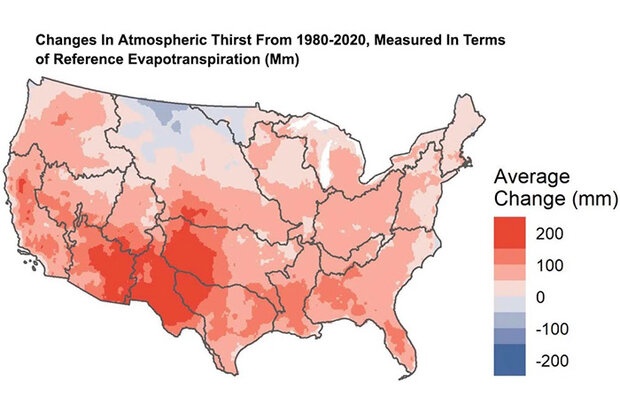Evaporative demand increase across lower 48 means less water supplies, drier vegetation, and higher fire risk

Changes in atmospheric thirst, measured in terms of reference evapotranspiration (mm), from 1980–2020. Credit: NOAA
While temperature changes across the U.S. of 1-2 degrees over the past 40 years are well established, changes in atmospheric evaporative demand - defined as the amount of water that could be transferred from the land surface to the atmosphere - are not as well quantified. This study, led by the Desert Research Institute with funding from NIDIS and the California-Nevada Climate Applications Program (CNAP, a NOAA RISA), addressed this gap and found that evaporative demand is increasing across nearly all of the U.S., especially in the Rio Grande and Lower Colorado River basins. Higher evaporative demands means less water supplies, drier soils and vegetation, and higher fire risk.
Read more at the link below.